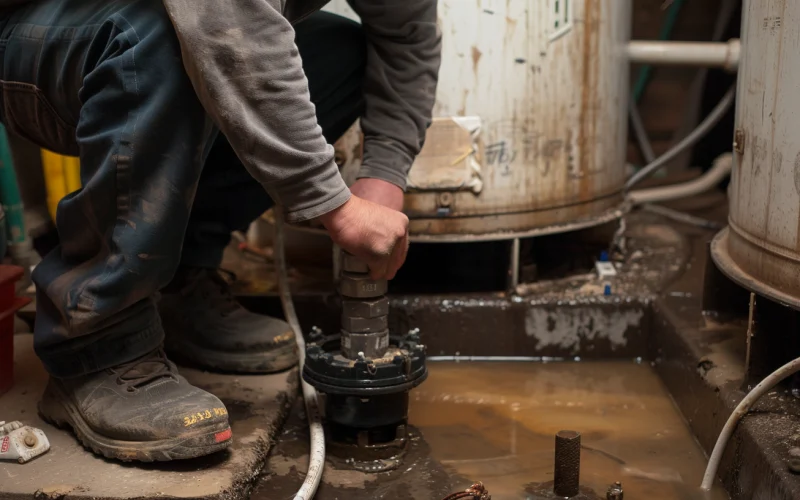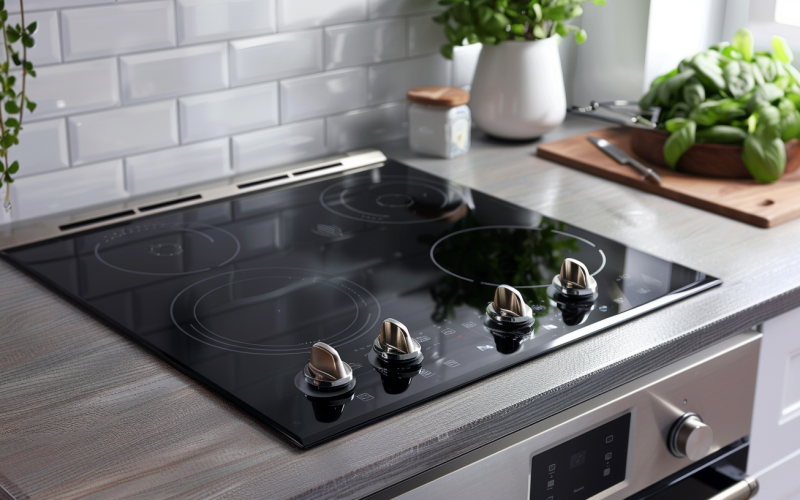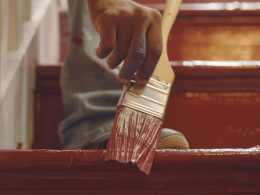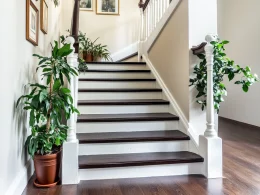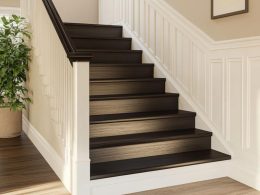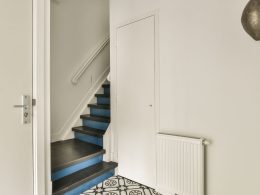Staircases are more than a way to get from one floor to another.
They’re a key part of a home’s design, but many people don’t know much about their parts or how they work. This can make discussing or planning staircase projects difficult.
That’s why I’m here to help clarify things. In this post, I’ll explain the anatomy of a staircase in simple terms.
You’ll learn about each part, from the steps to the handrails, and understand how they all fit together. By the end, you’ll have a good grasp of staircase basics.
This knowledge will be useful whether you are planning a home project, talking to a contractor, or just wanting to understand your home better.
Components of a Staircase
1. Risers

Risers play a crucial role in stair safety and comfort. The ideal riser height is typically between 6 and 8 inches, but this can vary based on local building codes. Consistency is key – even a small difference in riser height between steps can cause trips.
Some modern designs use “open risers,” where there’s a gap between steps. This can create a lighter look but may not be suitable for homes with small children or pets.
Maintenance Tips
- Regular Cleaning: Dust and wipe down risers frequently to prevent dirt buildup.
- Inspect for Damage: Check for cracks or loose parts and repair promptly.
- Painting/Finishing: If painted, watch for chipping paint and touch up as needed.
2. Treads

Treads are where your feet land, so their design is critical. The standard depth of 10 to 12 inches allows for a comfortable stride. Deeper treads can feel more luxurious and safer, especially on steeper staircases. The tread material matters, too.
Wood is classic and warm but can be slippery. Stone or tile can be beautiful but might need anti-slip treatments. The carpet adds softness and grip but requires more maintenance.
Maintenance Tips
- Dusting: Dust newel posts regularly to keep them clean.
- Check Stability: Ensure they are securely fastened and tighten any loose screws or bolts.
- Polishing: If they are made of wood, polish them periodically to maintain their shine.
3. Newel Posts
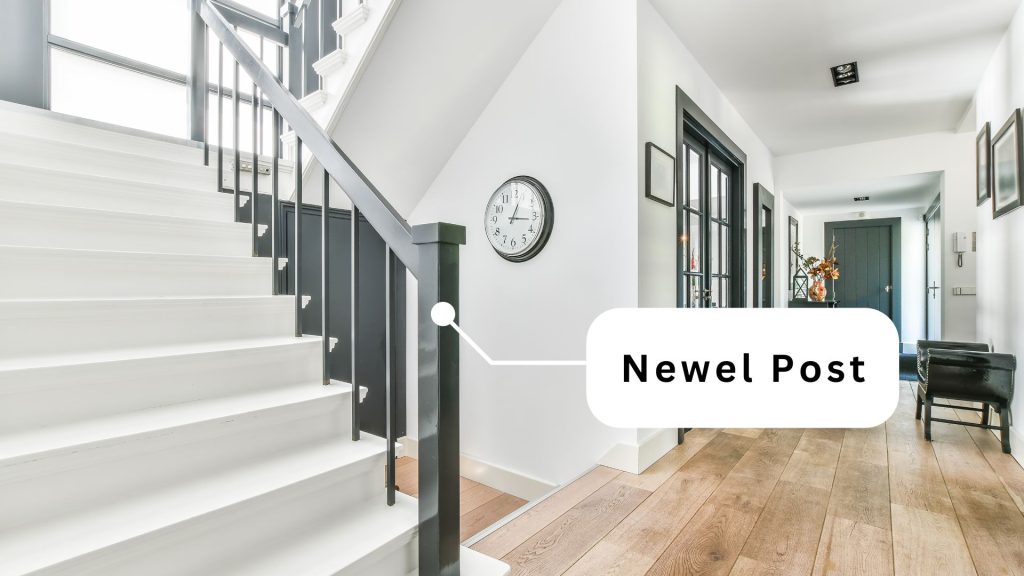
Newel posts are the big, strong posts you see at the start and end of a staircase. They’re also used at any point where the stairs change direction. These posts are super important because they support the whole structure of the stairs. They’re usually made of sturdy wood or metal.
Modern staircases might use sleek metal posts or glass for a minimalist look. The size of the newel posts usually corresponds to the scale of the stairs—larger, grander staircases need bigger, more substantial newel posts.
Maintenance Tips
- Dusting: Dust newel posts regularly to keep them clean.
- Check Stability: Ensure they are securely fastened and tighten any loose screws or bolts.
- Polishing: If they are made of wood, polish them periodically to maintain their shine.
4. Newel Cap
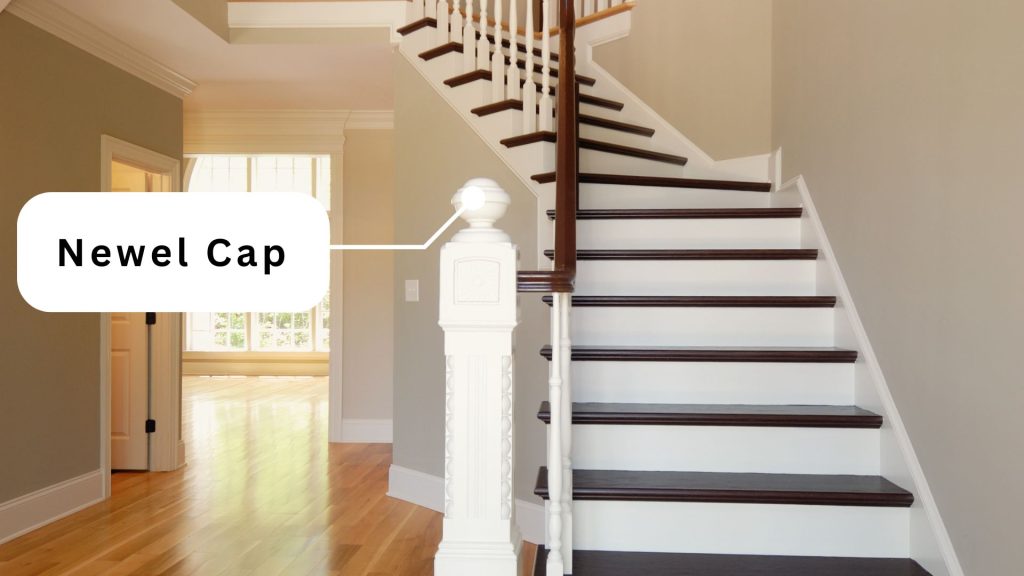
On top of each newel post, you’ll find a newel cap. These caps aren’t just for looks – they also protect the end grain of the wood post from moisture and wear. Newel caps come in lots of different styles, from simple to fancy. They can add to the overall look of your stairs.
You might see simple flat caps, ball-shaped caps, or intricately carved designs. In some cases, newel caps can even incorporate lighting elements to illuminate the staircase.
Maintenance Tips
- Clean Gently: Clean newel caps with a soft cloth to avoid scratching.
- Inspect for Looseness: Make sure the cap is firmly attached and reattach if needed.
- Polish: For wooden caps, apply polish to keep them looking new..
5. Spindles/Balusters
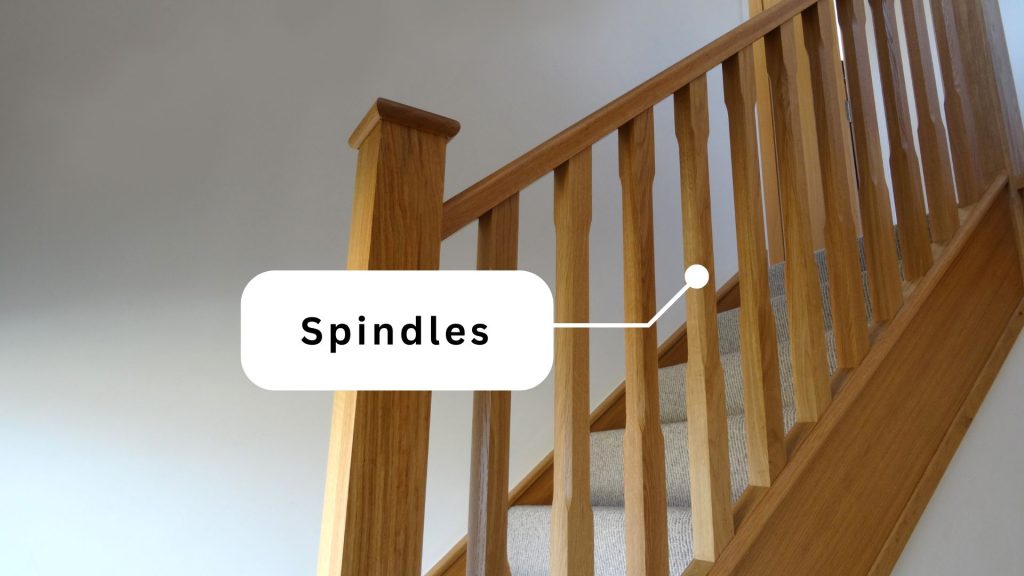
Spindles, or balusters, are the vertical posts that run from the steps to the handrail. They’re spaced closely together to prevent people (especially kids) from falling through. Depending on the staircase style, spindles can be plain, functional, or decorative.
Traditional turned wood spindles can give a classic feel, while straight metal balusters create a more modern look. Some contemporary designs use glass panels instead of individual spindles for an open, airy feel.
Maintenance Tips
- Wipe Down: Regularly wipe down spindles or balusters to remove dust and grime.
- Check for Stability: Ensure they are not wobbly and tighten any that are loose.
- Paint or Varnish: Touch up paint or varnish as needed to maintain appearance
6. Handrail
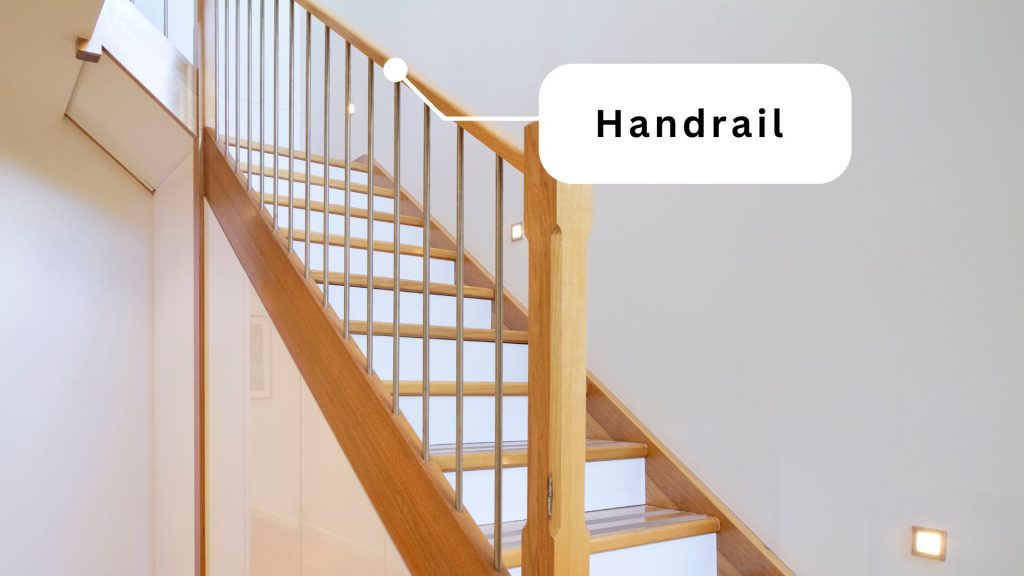
The handrail is a key safety feature of any staircase. It’s usually set at about 36 inches above the steps. This height works well for most adults. The shape of the handrail matters, too. It should be easy to grab and hold onto.
Round or oval shapes often work best. Some handrails have a groove underneath to make gripping easier. In public buildings, handrails usually need to meet specific safety rules.
Maintenance Tips
- Clean Regularly: Wipe down the handrail with a damp cloth to keep it clean.
- Inspect for Wear: Check for signs of wear or damage and repair or replace as necessary.
- Secure Fastenings: Ensure the handrail is securely fastened to the wall or balusters.
7. Half Newel Post
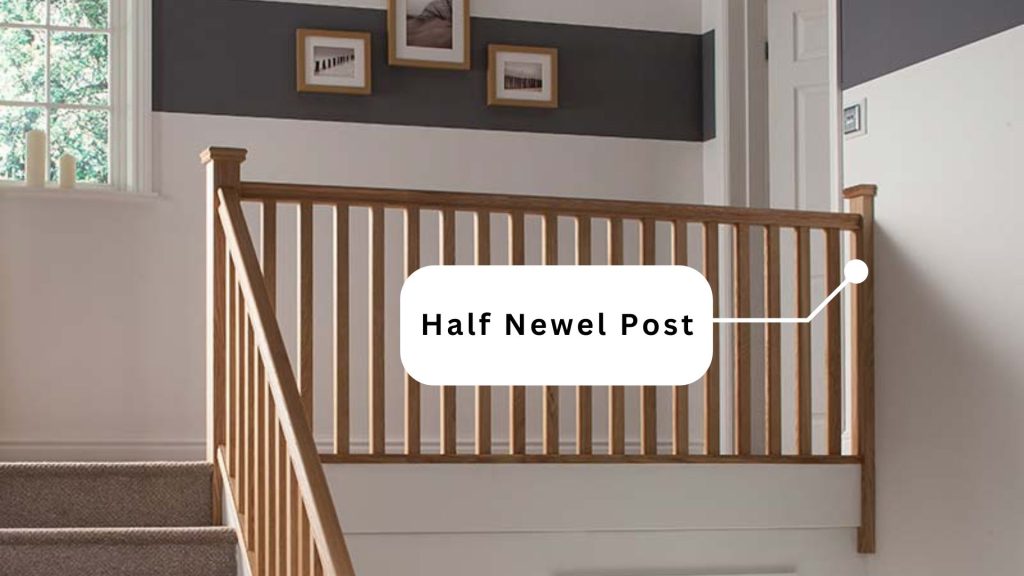
Half newel posts are used where the staircase meets a wall. They look at a full newel post without sticking out as far.
They’re basically like a full newel post cut in half lengthwise. They provide the same structural support as a full newel but take up less space.
Maintenance Tips
- Dusting: Dust frequently to prevent buildup.
- Check for Firmness: Make sure the half-newel post is securely attached to the wall.
- Polish: Apply polish to wooden posts to keep them looking polished.
8. Landing/Landing Return
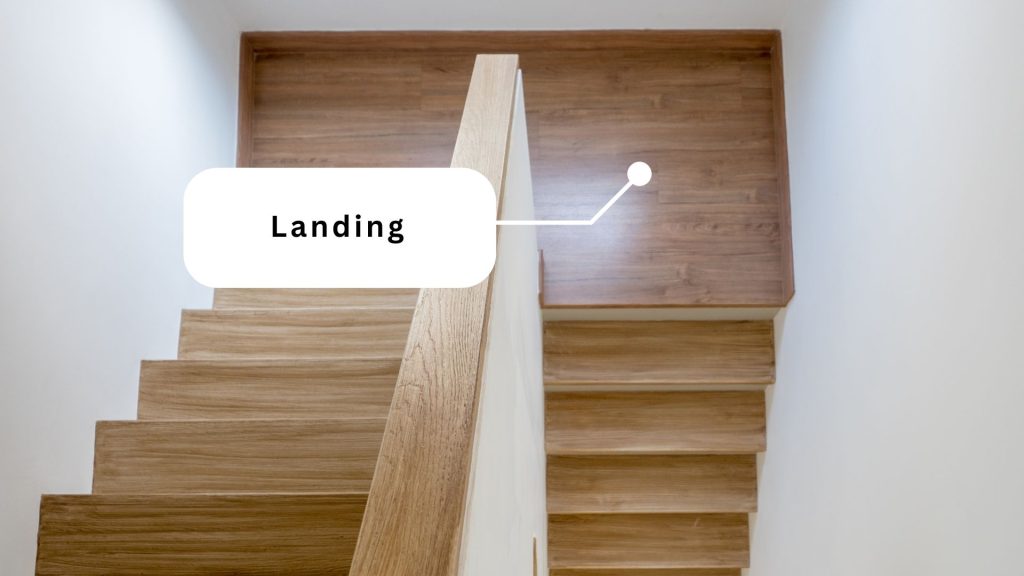
Landings are flat areas in a staircase and serve several purposes. They provide a resting spot on long staircases. Turning staircases allows for changes in direction. A landing at the top of the stairs gives you a safe place to pause before entering a room.
Landings need to be big enough for someone to stand comfortably. Some building codes have rules about how big landings need to be.
Maintenance Tips
- Sweep and Mop: Regularly sweep and mop the landing to keep it clean.
- Inspect for Damage: Check for any signs of wear or damage and repair as needed.
- Non-Slip Mats: Consider using non-slip mats to prevent accidents.
9. Base Rail
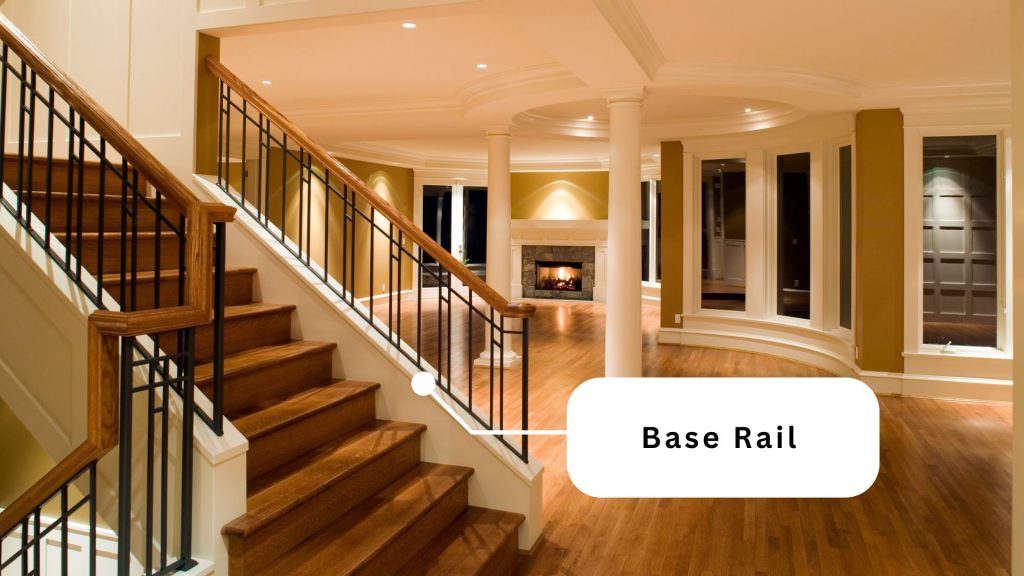
The base rail runs along the bottom of the spindles, parallel to the handrail. It helps to keep the spindles in place and adds to the staircase’s overall structure.
The base rail, also called a shoe rail, is often made of the same material as the handrail for a matching look.
Maintenance Tips
- Clean Thoroughly: Wipe down the base rail to remove dust and dirt.
- Inspect for Stability: Ensure it is firmly attached and not loose.
- Polish: Apply polish to wooden base rails to maintain their finish.
10. String Capping

String capping, stringer capping, or stair nosing is an often overlooked but important part of staircase design. It’s more than just a decorative touch – it plays a practical role too. String capping protects the top edge of the wall string from everyday wear and tear.
This includes scuffs from shoes or damage from cleaning equipment. Hiding the joint between the wall string and the wall itself provides the staircase with a clean, finished look.
Maintenance Tips
- Dust Regularly: Dust the string capping to keep it clean.
- Inspect for Damage: Look for cracks or loose pieces and repair as needed.
- Polish: Polish wooden string capping to keep it looking fresh.
11. Closed or Cut String Staircase
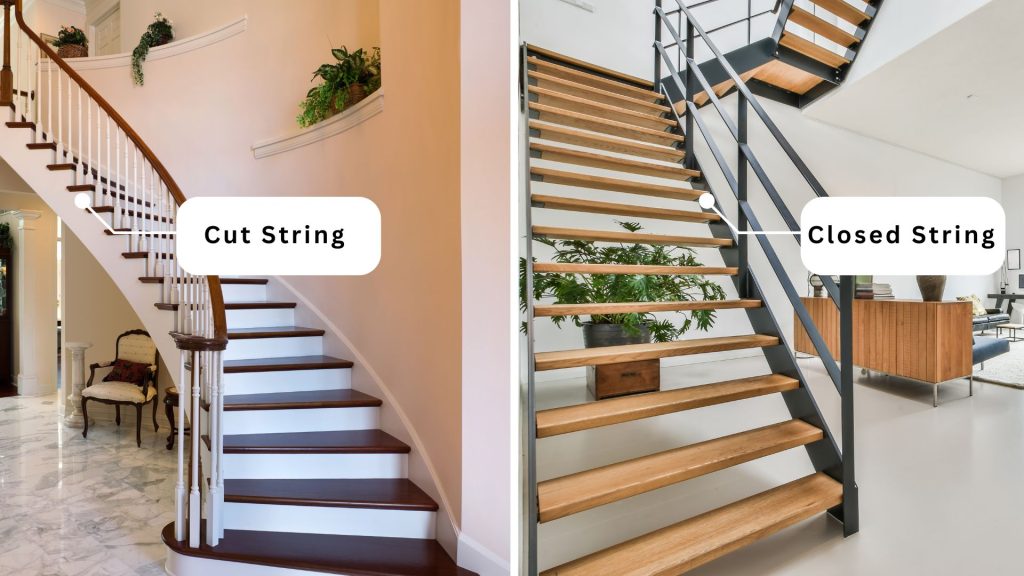
Strings, or stringers, are the backbone of the staircase. In a closed string design, the strings cover the edges of the treads and risers, giving a neat, boxed-in look.
Open or cut strings show off the profile of each step, creating a more open feel. Choosing between open and closed strings can change how your staircase looks and feels in your space.
Maintenance Tips
- Clean Sides: Wipe down the sides of the staircase regularly.
- Inspect for Stability: Ensure the strings are securely attached and not damaged.
- Repair as Needed: Fix any visible damage promptly to prevent further issues.
12. Wall String
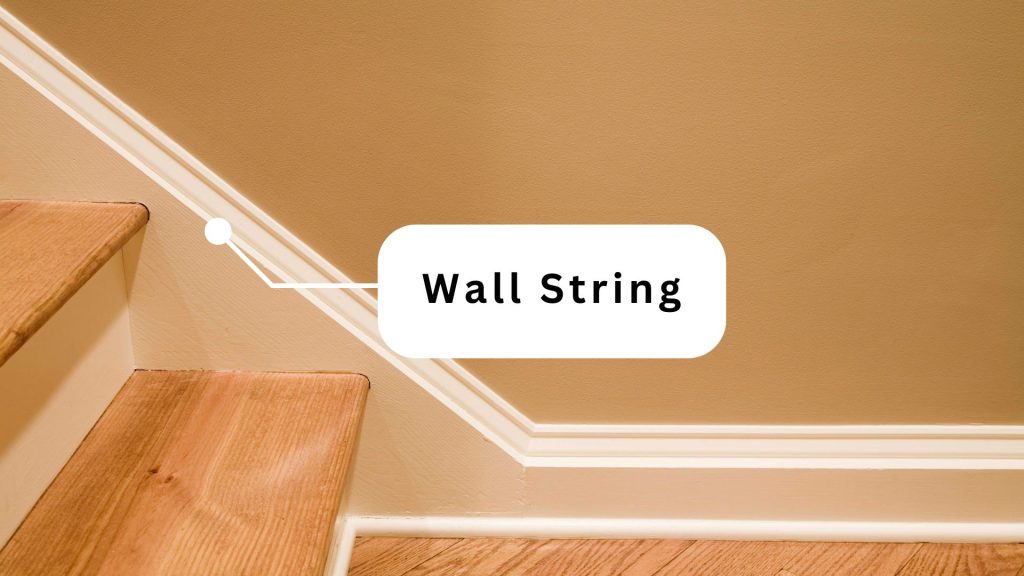
The wall string is a key structural element of a staircase. It’s a long, sturdy board that runs diagonally along the wall, following the slope of the stairs. On the wall side, it can be considered the backbone of the staircase.
The wall string provides crucial support, bearing a significant portion of the staircase’s weight. It’s also where the treads and risers are securely fitted.
Maintenance Tips
- Wipe Down: Regularly clean the wall string to remove dust and dirt.
- Inspect for Cracks: Check for any cracks or damage and repair as needed.
- Paint Touch-Ups: Touch up paint as necessary to maintain appearance
Conclusion
To wrap things up, let’s revisit the main points about staircases. We’ve explored the key parts, such as risers, treads, and newel posts, and how they all work together.
Remember, your staircase is more than just a way to get upstairs. It’s a central part of your home’s design and can set the tone for your space.
Knowing these basics can be helpful whether you’re planning a renovation or just want to understand your home better.
Next time you climb a set of stairs, take a moment to notice all these different parts. You might be surprised at how much thought goes into something we use daily!
What do you think? Do you see your stairs differently now?






